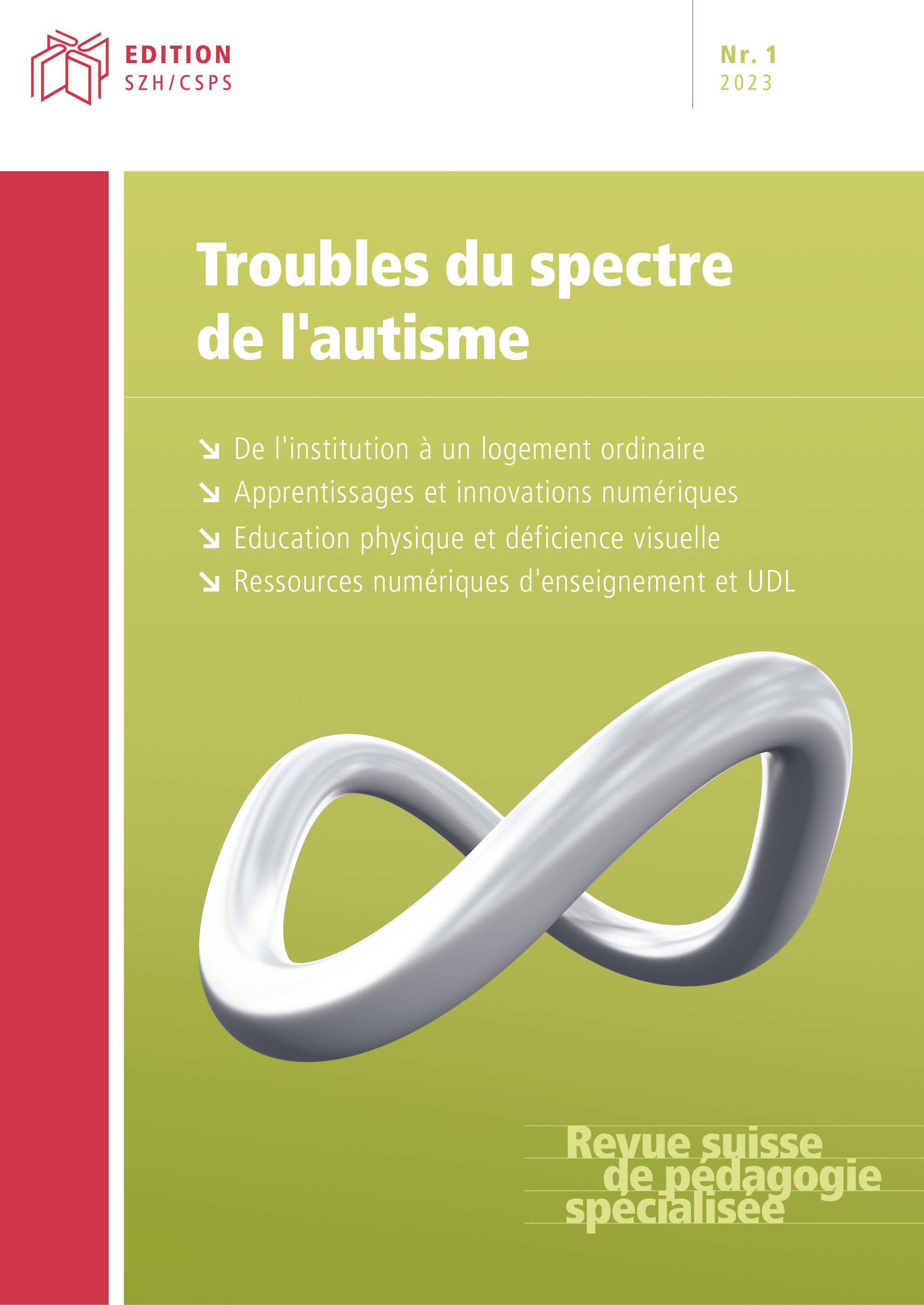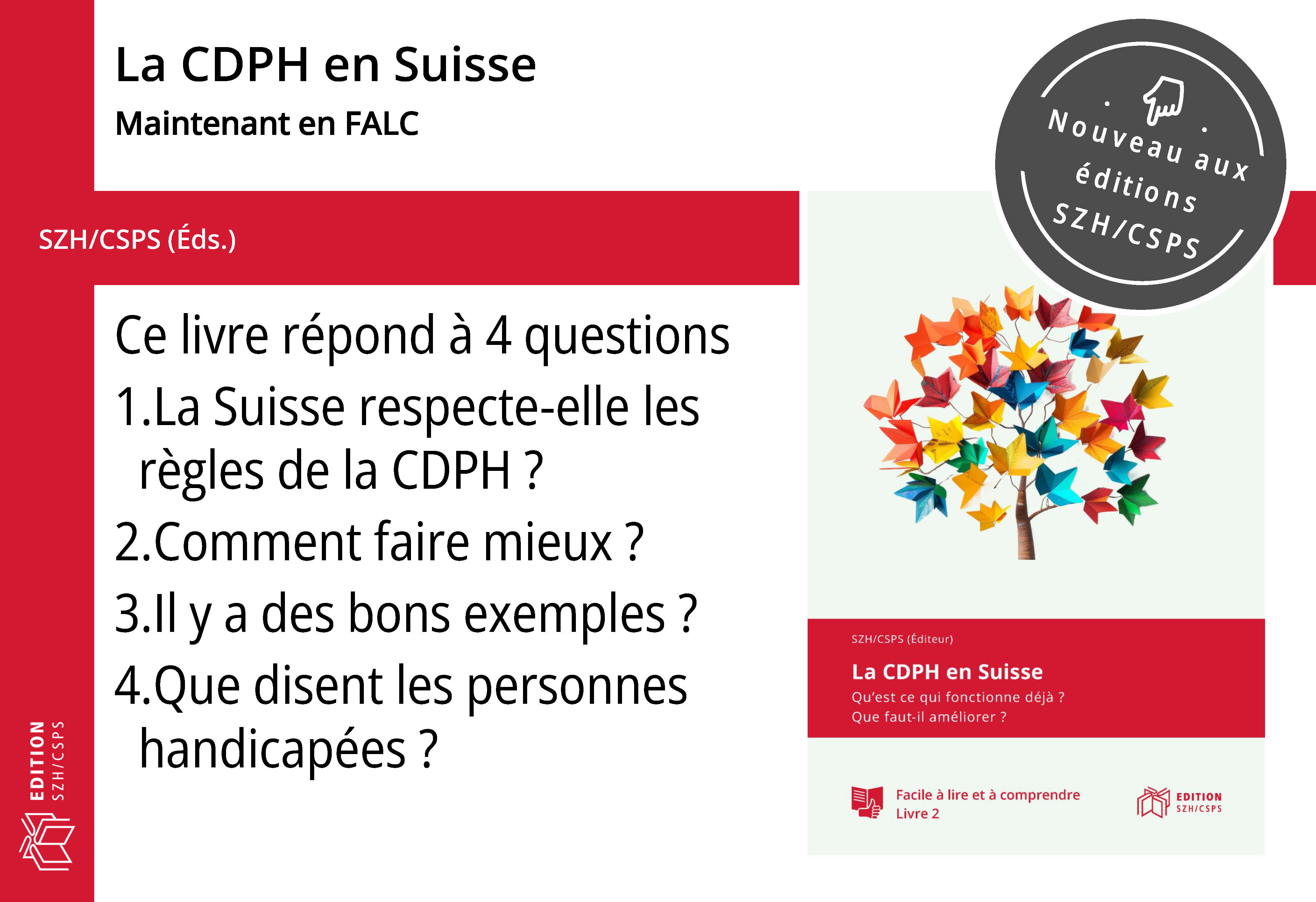L’annonce du diagnostic aux enfants et jeunes adultes avec TSA
DOI:
https://doi.org/10.57161/r2023-01-03Schlagworte:
Diagnose, Autismus-Spektrum-StörungAbstract
Der Weg zur Diagnose einer Autismus-Spektrum-Störung (ASS) ist ein komplexer Prozess, der für Eltern und Fachleute mit Stress verbunden sein kann. Die Qualität der vermittelten Informationen und die Nachbetreuung nach der Diagnose sind Faktoren, die zur Zufriedenheit der Betroffenen beitragen. Zu einem gewissen Zeitpunkt stellen sich die Eltern die Frage, wie sie ihrem Kind die ASS-Diagnose mitteilen sollen. Der aus drei Schritten bestehende Prozess «Storie di persone» ist ein flexibles und modulares Medium, um in Zusammenarbeit mit den Eltern die Diagnose den Kindern und jungen Erwachsenen mit ASS zu vermitteln.
Literaturhinweise
American Psychiatric Association [APA]. (2013). Diagnostic and statistical manual of mental disorders (5 th ed.). APA.
Attwood, T. (2008). Le syndrome d’Asperger. Guide complet. De Boeck.
Centre for Disease Control and Prevention [CDC]. (2014). Prevalence of Autism Spectrum Disorder Among Children Aged 8 Years - Autism and Developmental Disabilities Monitoring Network, 11 Sites, United States, 2010. Morbidity and Mortality Weekly Report, 63(2), 1–21. https://www.cdc.gov/mmwr/preview/mmwrhtml/ss6302a1.htm
Holliday, E. L., Stanley, H. C., Fodstad, J. C., & Minshawi, N. F. (2016). Stress and satisfaction in the diagnostic pro-cess. In J. L. Matson (Ed.), Handbook of assessment and diagnosis of autism spectrum disorders (pp. 137-155). Springer. https://doi.org/10.1007/978-3-319-27171-2_8
Howlin, P., & Asgharian, A. (1999). The diagnosis of autism and Asperger syndrome: findings from a survey of 770 families. Developmental medicine and child neurology, 41(12), 834-839. https://doi.org/10.1017/s0012162299001656
Jones, L., Goddard, L., Hill, E. L., Henry, L. A., & Crane, L. (2014). Experiences of receiving a diagnosis of autism spec-trum disorder: A survey of adults in the United Kingdom. Journal of autism and developmental disor-ders, 44(12), 3033-3044. https://doi.org/10.1007/s10803-014-2161-3
Mazumder, R., & Thompson-Hodgetts, S. (2019). Stigmatization of Children and Adolescents with Autism Spectrum Disorders and their Families: a Scoping Study. Review Journal of Autism and Developmental Disorders, 6(6), 96-107. https://doi.org/10.1007/s40489-018-00156-5
National Autistic Society [NAS]. (2020). Telling your child about their diagnosis – a guide for parents and carers. https://www.autism.org.uk/advice-and-guidance/topics/diagnosis/disclosing-your-autism/parents-and-carers
Pavlopoulou, G., Burns, C., Cleghorn, R., Skyrla, T., & Avnon, J. (2022). “I often have to explain to school staff what she needs”. School experiences of non-autistic siblings growing up with an autistic brother or sis-ter. Research in Developmental Disabilities, 129, 1-14. https://doi.org/10.1016/j.ridd.2022.104323
Punshon, C., Skirrow, P., & Murphy, G. (2009). The ‘not guilty verdict’: psychological reactions to a diagnosis of Asperger syndrome in adulthood. Autism, 13(3), 265-283. https://doi.org/10.1177/1362361309103795
Veröffentlicht
Zitationsvorschlag
Ausgabe
Rubrik
Lizenz
Copyright (c) 2023 Gionata Bernasconi, Nicola Rudelli

Dieses Werk steht unter der Lizenz Creative Commons Namensnennung 4.0 International.



